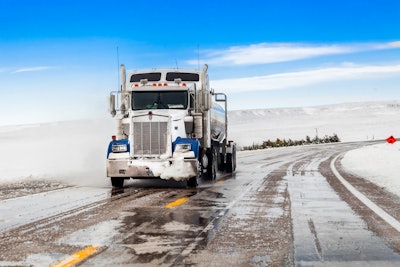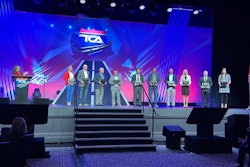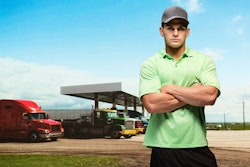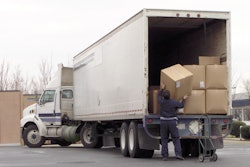
The winter months have arrived and with it the multitude of accidents that happen annually as a result of drivers driving as if the weather hasn’t changed.
Snow, ice and fog call for drivers to decrease their speed and increase their following distance, but AIM Transportation Solutions Safety Manager John Rugarber said most drivers – passenger and professional – don’t heed those life-saving rules. Driving too fast for conditions is the No. 1 reason for winter-related accidents, followed by failure to keep a safe following distance, failure to adjust for low visibility and loss of traction when stopping.
According to the Federal Highway Administration Road Weather Management Program, 24% of weather-related accidents occur on snowy, slushy or ice-covered roadways. So ‘tis the season for jackknifed tractor trailers along the 70% of America’s roads located in snowy regions that receive more than five inches of snow annually.
“As much as you think you may be slowing down enough, chances are you aren't,” Rugarber said.
Rugarber offered some tips for safety managers and drivers during the winter season, and slowing down, followed closely by increasing distance, is his top tip in any weather condition, whether snow, fog or ice.
He said for following distance AIM recommends six seconds on a dry roadway. In a rainstorm, a driver needs approximately 50% more stopping distance than on a dry roadway. With snow, drivers need two times the normal stopping distance, and with ice drivers need three times the normal stopping distance.
“We travel the roadways every day. Very few people can truly follow that following distance, and it's a shame because the habits we get into when the weather is perfect are the same habits that we bring to the table when the weather gets bad,” Rugarber said. “Most people do not change the way they drive dramatically when it goes from being good weather to bad weather.”
While bad weather abounds year-round, the winter months bring more varied conditions like fog. Rugarber said the most common time for fog is fall and winter. His top tip there is use your low beams.
“Do not use your high beams when you're driving in fog. Some people think they'll be able to see better when they put their high beams on, and it really just reflects off of that fog bank back into your face,” he said. “Keeping your low beams on will keep the headlights directed down at the roadway.”
But ice was where he could really shed some light.
Though it’s almost impossible to tell when black ice is present, he offered several helpful warning signs.
• Ice buildup on the outside of your mirrors
• The sound of your tires on the roadway disappears
• No spray coming off your trailer tires
Rugarber said drivers can also be aware of their surroundings – simply having knowledge that black ice forms at approximately 32 degrees, give or take, and that changes when transitioning from asphalt to concrete at an overpass. Some tips he offered included avoid changing lanes when entering an overpass area, take your foot off the accelerator but don’t touch the brake if you feel your trailer breaking away, and avoid packs of traffic.
And if conditions are too bad, just stop, he said.
He said it’s important to remember there are safety concerns after a storm as well.
“Make it a point to tell your drivers that when they come out of these areas of snow and ice and sleet, pull over somewhere and take a look at the rear of your vehicle and take a look at the front because inevitably snow is built up on the lights also. Remember to wipe off the reflective tape,” he said. “A lot of drivers I don't think are even aware that you can be ticketed for those violations.”












